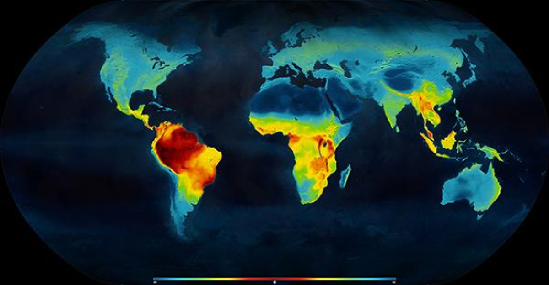|
Diverse
Diversity, diversify, or diverse may refer to: Business *Diversity (business), the inclusion of people of different identities (ethnicity, gender, age) in the workforce * Diversity marketing, marketing communication targeting diverse customers *Supplier diversity, the use of diverse suppliers Politics * Diversity (politics), the political and social policy of encouraging tolerance for people of different cultural and racial backgrounds * Diversity Immigrant Visa or Green Card Lottery, a United States immigration program * Diversity jurisdiction, a concept under which U.S. federal courts can hear suits between parties from different states * Diversity training, the process of educating people to function in a diverse environment * Cultural diversity, the respect of different cultures and interculturality * Functional diversity (disability), a term for special needs, disability, impairment and handicap * Gerodiversity, a multicultural approach to issues of aging * Multicultura ... [...More Info...] [...Related Items...] OR: [Wikipedia] [Google] [Baidu] |
Multiculturalism
The term multiculturalism has a range of meanings within the contexts of sociology, political philosophy, and colloquial use. In sociology and in everyday usage, it is a synonym for "Pluralism (political theory), ethnic pluralism", with the two terms often used interchangeably, and for cultural pluralism in which various ethnic groups collaborate and enter into a dialogue with one another without having to sacrifice their particular identities. It can describe a mixed ethnic community area where multiple cultural traditions exist (such as New York City or London) or a single country within which they do (such as Switzerland, Belgium or Russia). Groups associated with an Indigenous peoples, indigenous, aboriginal or wikt:autochthonous, autochthonous ethnic group and settler-descended ethnic groups are often the focus. In reference to sociology, multiculturalism is the end-state of either a natural or artificial process (for example: legally-controlled immigration) and occurs on ... [...More Info...] [...Related Items...] OR: [Wikipedia] [Google] [Baidu] |
Neurodiversity
Neurodiversity refers to diversity in the human brain and cognition, for instance in sociability, learning, attention, mood and other mental functions. It was coined in 1998 by sociologist Judy Singer, who helped popularize the concept along with journalist Harvey Blume, and situates human cognitive variation in the context of biodiversity and the politics of minority groups. This view arose out of the autism rights movement, as a challenge to prevailing views that certain things currently classified as neurodevelopmental disorders are inherently pathological. It builds on the social model of disability, in which disability arises out of societal barriers interacting with individual differences, rather than people being disabled simply as a result of having impairments. Some neurodiversity advocates and researchers, notably Judy Singer and Patrick Dwyer, argue that the neurodiversity paradigm is the middle ground between strong medical model and strong social model. Th ... [...More Info...] [...Related Items...] OR: [Wikipedia] [Google] [Baidu] |
Diversity (business)
The business case for diversity stems from the progression of the models of diversity within the workplace since the 1960s. In the United States, the original model for diversity was situated around affirmative action drawing from equal opportunity employment objectives implemented in the Civil Rights Act of 1964. Equal employment opportunity was centered around the idea that any individual academically or physically qualified for a specific job could strive for (and possibly succeed) at obtaining the said job without being discriminated against based on identity. This compliance-based model gave rise to the idea that tokenism was the reason an individual was hired into a company when they differed from the dominant group. Dissatisfaction from minority groups eventually altered and/or raised the desire to achieve perfect employment opportunities in every job. The social justice model evolved next and extended the idea that individuals outside the dominant group should be given op ... [...More Info...] [...Related Items...] OR: [Wikipedia] [Google] [Baidu] |
Functional Diversity (ecology)
Biodiversity or biological diversity is the variety and variability of life on Earth. Biodiversity is a measure of variation at the genetic ('' genetic variability''), species (''species diversity''), and ecosystem ('' ecosystem diversity'') level. Biodiversity is not distributed evenly on Earth; it is usually greater in the tropics as a result of the warm climate and high primary productivity in the region near the equator. Tropical forest ecosystems cover less than 10% of earth's surface and contain about 90% of the world's species. Marine biodiversity is usually higher along coasts in the Western Pacific, where sea surface temperature is highest, and in the mid-latitudinal band in all oceans. There are latitudinal gradients in species diversity. Biodiversity generally tends to cluster in hotspots, and has been increasing through time, but will be likely to slow in the future as a primary result of deforestation. It encompasses the evolutionary, ecological, and cultural pr ... [...More Info...] [...Related Items...] OR: [Wikipedia] [Google] [Baidu] |
Biodiversity
Biodiversity or biological diversity is the variety and variability of life on Earth. Biodiversity is a measure of variation at the genetic ('' genetic variability''), species ('' species diversity''), and ecosystem ('' ecosystem diversity'') level. Biodiversity is not distributed evenly on Earth; it is usually greater in the tropics as a result of the warm climate and high primary productivity in the region near the equator. Tropical forest ecosystems cover less than 10% of earth's surface and contain about 90% of the world's species. Marine biodiversity is usually higher along coasts in the Western Pacific, where sea surface temperature is highest, and in the mid-latitudinal band in all oceans. There are latitudinal gradients in species diversity. Biodiversity generally tends to cluster in hotspots, and has been increasing through time, but will be likely to slow in the future as a primary result of deforestation. It encompasses the evolutionary, ecological, and ... [...More Info...] [...Related Items...] OR: [Wikipedia] [Google] [Baidu] |
Gerodiversity
Gerodiversity is the multicultural approach to issues of aging. This approach provides a theoretical foundation for the medical and psychological treatment of older adults within an ecological context that includes their cultural identity and heritage, social environment, community, family system, and significant relationships. Gerodiversity encompasses a social justice framework, which considers the social and historical dynamics of privilege and inequality. In addition to issues of aging, gerodiversity includes race, ethnicity, language, gender identity, socioeconomic status, physical ability or disability, sexual orientation, level of education, country of origin, location of residence, and religion or spirituality. Gerodiversity builds on the field of clinical geropsychology, which applies psychological and developmental methods to understanding the behavioral, emotional, cognitive, and biological aspects of aging in the context of providing clinical care to older adults. The ... [...More Info...] [...Related Items...] OR: [Wikipedia] [Google] [Baidu] |
Crop Diversity
Crop diversity or crop biodiversity is the variety and variability of crops, plants used in agriculture, including their genetic and phenotypic characteristics. It is a subset of and a specific element of agricultural biodiversity. Over the past 50 years, there has been a major decline in two components of crop diversity; genetic diversity within each crop and the number of species commonly grown. Crop diversity loss threatens global food security, as the world's human population depends on a diminishing number of varieties of a diminishing number of crop species. Crops are increasingly grown in monoculture, meaning that if, as in the historic Great Famine of Ireland, a single disease overcomes a variety's resistance, it may destroy an entire harvest, or as in the case of the 'Gros Michel' banana, may cause the commercial extinction of an entire variety. With the help of seed banks, international organizations are working to preserve crop diversity. Biodiversity loss The loss ... [...More Info...] [...Related Items...] OR: [Wikipedia] [Google] [Baidu] |
Diversity Marketing
Diversity marketing (inclusive marketing, inclusion marketing, or in-culture marketing) is a marketing paradigm which sees marketing (and especially marketing communications) as a way to connect with the different individuals in the market. As society has progressed companies have learned that not everyone can be chalked up as the same and that every person has different life experiences, may it be religion culture or beliefs. "Diversity marketing involves acknowledging that marketing and advertising must offer alternative ways of communicating to these diverse groups. With that knowledge, diversity marketers aim to develop a mix of different communication methods, in order to reach people in each of the diverse groups present in the market" Thus diversity marketing is the process in which companies study the market they are in or about to enter by different mean(e.g. surveys, focus groups or in some cases telecommunication). Diversity marketing is helping business owners and oper ... [...More Info...] [...Related Items...] OR: [Wikipedia] [Google] [Baidu] |
Diversity Jurisdiction
In the law of the United States, diversity jurisdiction is a form of subject-matter jurisdiction that gives U.S. federal courts the power to hear lawsuits that do not involve a federal question. For a U.S. federal court to have diversity jurisdiction over a lawsuit, two conditions must be met. First, there must be "diversity of citizenship" between the parties, meaning the plaintiffs must be citizens of different U.S. states than the defendants. Second, the lawsuit's "amount in controversy" must be more than $75,000. If a lawsuit does not meet these two conditions, U.S. federal courts will normally lack the power to hear it unless it involves a federal question, and the lawsuit would need to be heard in state court instead. The United States Constitution, in Article III, Section 2, grants Congress the power to permit federal courts to hear diversity cases through legislation authorizing such jurisdiction. The provision was included because the Framers of the Constitution were co ... [...More Info...] [...Related Items...] OR: [Wikipedia] [Google] [Baidu] |
Diversity (politics)
Diversity as seen in sociology and political studies is the degree of differences in identifying features among the members of a purposefully defined group, such as any group differences in racial or ethnic classifications, age, gender, religion, philosophy, physical abilities, socioeconomic background, sexual orientation, gender identity, intelligence, mental health, physical health, genetic attributes, personality, behavior or attractiveness. When measuring human diversity, a diversity index exemplifies the likelihood that two randomly selected residents have different ethnicities. If all residents are of the same ethnic group it is zero by definition. If half are from one group and half from another, it is 50. The diversity index does not take into account the willingness of individuals to cooperate with those of other ethnicities. International human rights The Convention on the Rights of Persons with Disabilities affirms to "respect difference and acceptance ... [...More Info...] [...Related Items...] OR: [Wikipedia] [Google] [Baidu] |
Ecosystem Diversity
Ecosystem diversity deals with the variations in ecosystems within a geographical location and its overall impact on human existence and the environment. Ecosystem diversity addresses the combined characteristics of biotic properties (biodiversity) and abiotic properties (geodiversity). It is a variation in the ecosystems found in a region or the variation in ecosystems over the whole planet. Ecological diversity includes the variation in both terrestrial and aquatic ecosystems. Ecological diversity can also take into account the variation in the complexity of a biological community, including the number of different niches, the number of and other ecological processes. An example of ecological diversity on a global scale would be the variation in ecosystems, such as deserts, forests, grasslands, wetlands and oceans. Ecological diversity is the largest scale of biodiversity, and within each ecosystem, there is a great deal of both species and genetic diversity. Impact Dive ... [...More Info...] [...Related Items...] OR: [Wikipedia] [Google] [Baidu] |
Glossary Of Geography Terms
This glossary of geography terms is a list of definitions of terms and concepts used in geography and related fields, including Earth science, oceanography, cartography, and human geography, as well as those describing spatial dimension, topographical features, natural resources, and the collection, analysis, and visualization of geographic data. Related terms may be found in glossary of geology, glossary of agriculture, glossary of environmental science, and glossary of astronomy. A B C ... [...More Info...] [...Related Items...] OR: [Wikipedia] [Google] [Baidu] |




